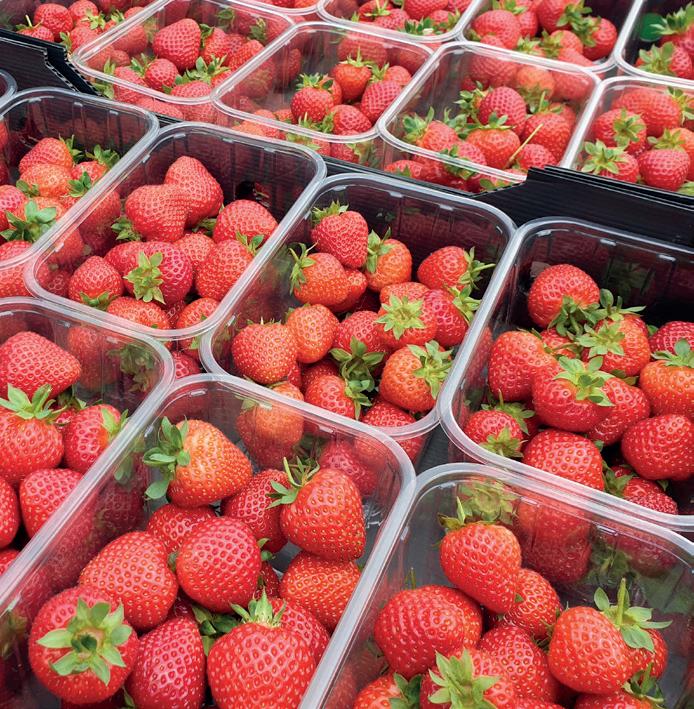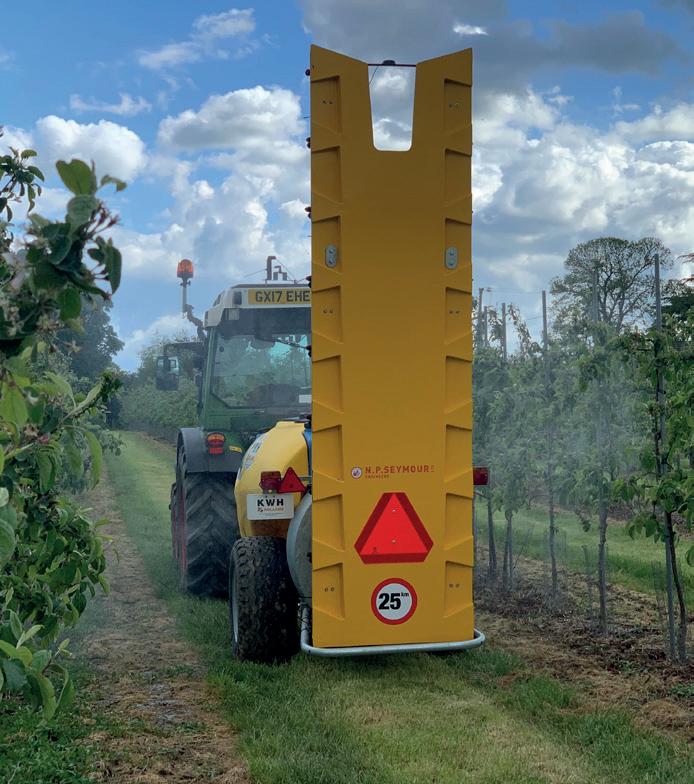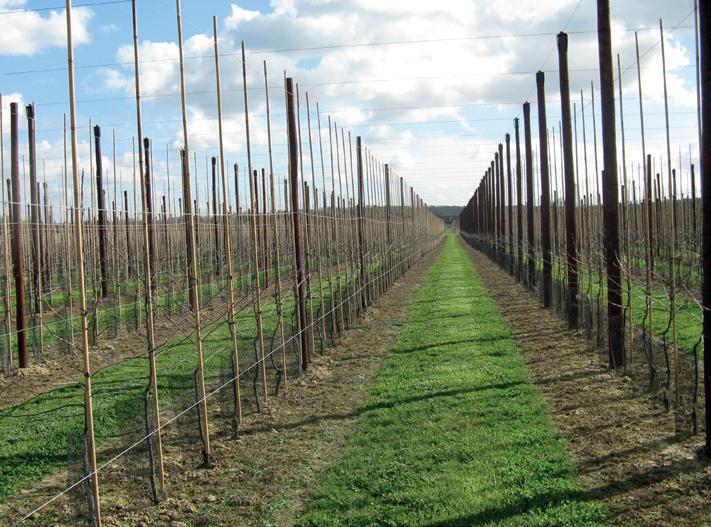
3 minute read
Developing non-chemical control strategies for SWD
Since the arrival of spotted wing drosophila (SWDDrosophila suzukii – Figure 1) in the UK in 2012, NIAB scientists have collaborated with others to lead two major AHDB funded projects to improve our knowledge and understanding of how to manage SWD in UK conditions, and more recently, to develop novel control strategies that don’t rely on conventional chemical spray control. Most recently, they have been engaged in projects focussing on the use of bait sprays for control, the identification of oviposition deterrents (BBSRC funded) and the development of the sterile insect technique (SIT) for control (Innovate UK funded).
Title: Assessing the impact of bait sprays targeted to control spotted wing drosophila on beneficial and nontarget insects
Advertisement
Funder: The Worshipful Company of Fruiterers
Industry partners: Microbiotech Ltd (Lead), Russell IPM, Berry Gardens Growers Ltd
Term: February 2022 to January 2024
In AHDB project SF/TF 145a, NIAB and Microbiotech Ltd scientists identified that the adjuvant Combi-Protec and a form of sugar (now commercially available as Probandz) acted as attractants to SWD adults. The baits were then used in combination with low rates of plant protection products (PPPs) and applied as a band spray to a reduced area of the crop canopy, where they attracted adult SWD to feed on the treated area of crop and ingest the PPP, which led to their death. Such an approach to control has financial benefits through the reduction of product being applied and reduced time taken to make the application. It also offers environmental benefits through a controlled application to a small area of crop. However, questions have been raised over the impact such a technique may have on beneficial and non-target insects, which may also be attracted to these bait sprays. This project aims to provide some answers.
The project
In laboratory conditions, NIAB has begun to assess the impact of spinosad alone, spinosad in combination with Combi-Protec, Combi-Protec alone, Probandz alone and a water control to non-target predators, pollinators and closely related Drosophila species. Insects being tested include ladybird larvae, hoverfly adults, lacewing larvae, earwigs, Drosophila melanogaster (common fruit fly) and the predatory bug, Orius.

Results
For earwigs and hoverflies, CombiProtec and Probandz on their own had no impact on mortality, suggesting that these adjuvants/ baits are not increasing the likelihood of mortality when used as bait sprays. Lacewing (Figure 2) and ladybird larval numbers were also unaffected using the adjuvants as baits, either with reduced rate plant protection product or on their own, confirming that the adjuvants/baits are not attractive to these species. Work is continuing to determine the impact on Orius.
Title: Bait sprays to control Drosophila suzukii in commercial raspberry
Funder: AHDB
Industry partners: Russell IPM (Lead), Berry Gardens Growers Ltd, Microbiotech Ltd


Term: May 2022 to December 2022
Previous bait spray research funded by AHDB has been very successful in strawberry, raspberry and cherry. A coded product (now named ‘Probandz’) and a commercially available adjuvant Combi-Protec are both very attractive to SWD adults. When added to reduced rates of Benevia on strawberry or Tracer and Exirel on raspberry (Figure 3) and cherry, and sprayed to a reduced area of the crop canopy, they attracted SWD adults to feed on the sprayed leaves, allowing them to ingest the control chemical causing death. To support future applications for authorisations, which can employ such adjuvants as bait sprays, residues data needs to be generated to demonstrate the safety of the application method.
The project
The aim of this project was to progress testing of bait sprays in a commercial raspberry crop, and compare efficacy to a full rate, grower standard plant protection product spray regime. Note there was no untreated control in this project and all bait sprays were compared to the industry standard of full foliar applications without bait. Treatment efficacy has been measured by the number of SWD larvae detected in weekly fruit samples over 6 weeks. Plant protection product residue levels have also been quantified to determine if treatments are likely to exceed maximum levels. In addition, we have measured the impact of bait sprays on non-target organisms in the crop, e.g. numbers of pollinators visiting flowers and natural enemies in the crop canopy.

Results
At the time of writing, residues data was still being obtained and analysed. Information on the impact of bait sprays has been collected. The entomology team at NIAB noted the number of visits from various non-target insects such as pollinators, beneficial insects and predators. There were no significant differences in bumblebee or honeybee numbers visiting raspberry flowers or leaves, suggesting that bait sprays had no effect in attracting beneficials to these plots. They also conducted tap sampling and assessed numbers of insects found. Orius, parasitic wasps and spiders were recorded but there were no significant differences in numbers between different treatments. Similarly, there were no significant differences in numbers of pest species or ants, although there were higher numbers of some fly species in the Probandz plus 4% plant protection product treatment.









